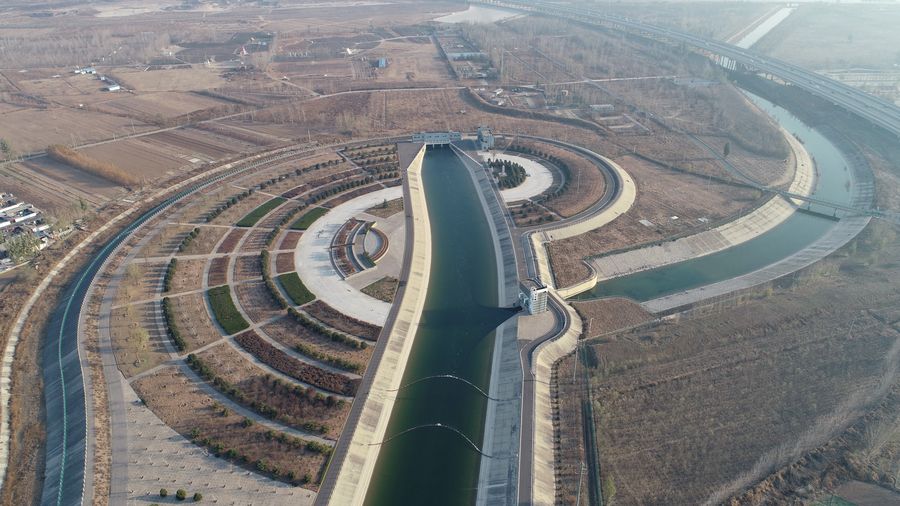
The Danjiangkou Reservoir region in Xichuan County of Nanyang, central China's Henan Province, Dec. 10, 2019. The middle route of China's south-to-north water diversion project begins at the Danjiangkou Reservoir and runs across Henan and Hebei provinces before reaching Tianjin and Beijing. (Xinhua/Feng Dapeng)
Directly benefitting more than 120 million people, China's south-to-north water diversion project has served as a lifeline of water supply for over 40 large and medium-sized cities and 260 counties as these areas started to use the "southern water".
BEIJING, Dec. 13 (Xinhua) -- As the operation of China's south-to-north water diversion project enters its sixth year, it is about time to fully understand benefits it has brought for the populous yet water-stressed nation.
Since Dec. 12, 2014, the first phase of eastern and middle routes have delivered nearly 30 billion cubic meters of water to the country's north.
Directly benefitting more than 120 million people, it has served as a lifeline of water supply for over 40 large and medium-sized cities and 260 counties as these areas started to use the "southern water," said Vice Minister of Water Resources Jiang Xuguang.
In Beijing, it has transferred over 5.2 billion cubic meters of water from the Danjiangkou Reservoir in central China's Hubei Province, benefiting more than 12 million residents. In Tianjin, the water used in all 14 urban districts comes from the Hanjiang River, a major tributary of the Yangtze, he said.
Apart from the tangibles, the project has increasingly drawn public attention for its facilitation of economic growth, industrial upgrading and ecological improvement in regions along the routes.
During the construction of the eastern and middle routes, investment in the project helped lift China's GDP growth by 0.12 percentage points each year, with nearly 100,000 workers employed each day during the peak of the construction, according to Jiang.
Data also showed that the routes have boosted industrial and agricultural output for cities on the receiving end by almost 100 billion yuan (14.25 billion U.S. dollars) per year.

The canal of the south-to-north water diversion project in Shijiazhuang of north China's Hebei Province, Nov. 26, 2019. (Xinhua/Yang Shiyao)
Meanwhile, industries consuming large amounts of energy and causing high pollution and emissions were phased out or restricted in the areas on the receiving end to ensure water safety, which in turn prompted local ecological improvement, according to Jiang.
Improvement in the water environment was obvious, he said, noting that more than 30 rivers along the middle route were replenished and the city lakes and wetlands were expanded.
Most notably, the water level of underground water reserves also increased.
In Beijing, nearly 70 percent of the diverted water has been supplied for waterworks, and the remaining water has been used to replenish groundwater, as well as reservoirs, rivers and lakes.
By the end of October, the average depth of underground water in Beijing's plain areas stood at 22.78 meters, 2.88 meters higher than the average depth of underground water before Beijing started receiving water from the project in late 2014.
Considering China's economy is still powering ahead at a relatively fast rate, water demand is set to rise. Experts have warned that the country would still face an obvious gap between water supply and demand in the long run.
With its western route still in the pre-construction stage, the project will continue to act as an important strategic infrastructure to optimize water resources, boost sustainable economic and social development and improve people's lives. ■



